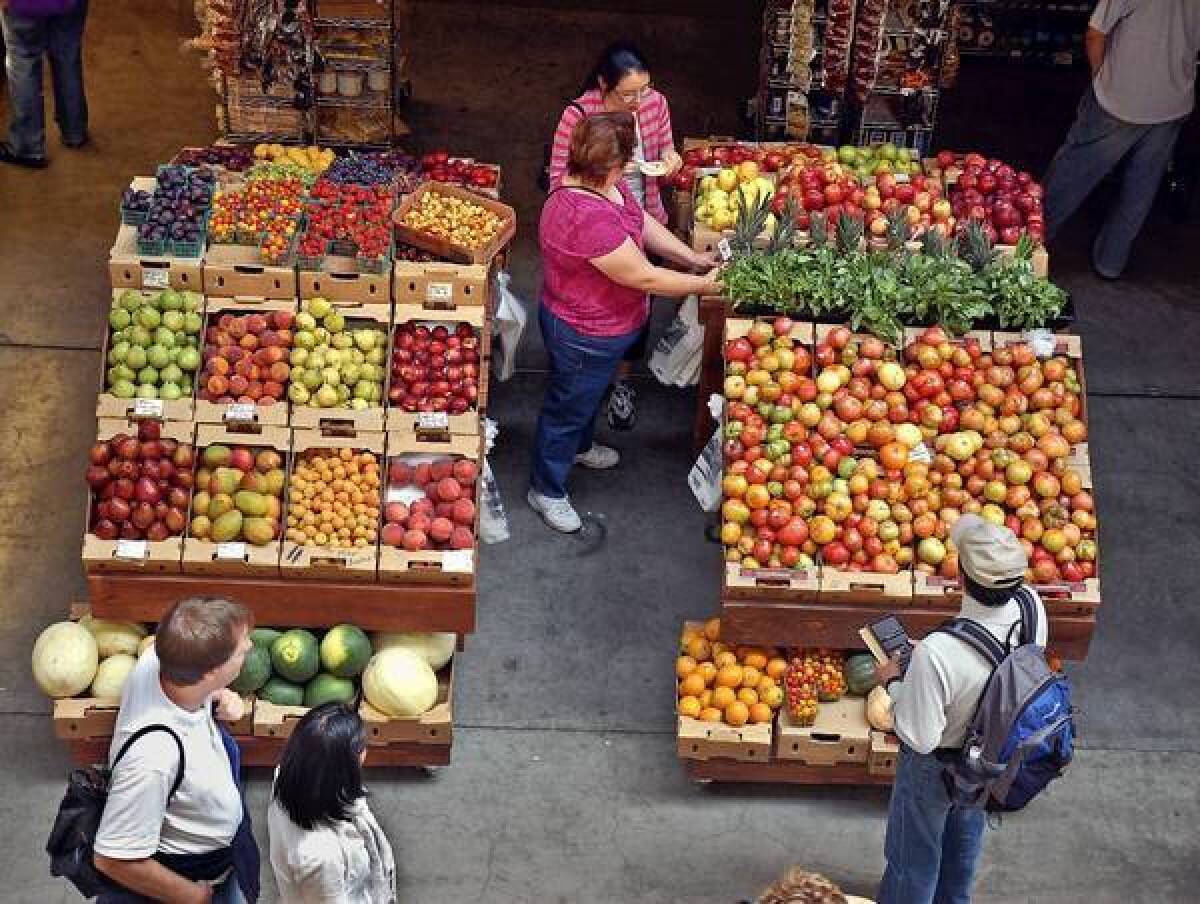Food as medicine? What to make of the claims.

What’s a healthful food and what’s a healing food? Is there a difference? At least since the mid-19th century, when the Battle Creek Sanitarium opened its doors and people flocked there to follow John Harvey Kellogg’s regime of whole grains, nuts and frequent enemas, many Americans have sought food as medicine.
I have a shelf of books with titles such as “Food — Your Miracle Medicine” and “The Food Pharmacy,” and my smartphone is filled with snapshots of the “super foods” on display at a trade show: acai and goldenberry, chia, coconut and flax, goji berries and hemp, maca root and other berries, nuts, seaweeds and roots I’ve never heard of (yacon, lucuma, camu, maqui).
Many of these often are accompanied by health claims that, according to Walter Willett, chairman of the department of nutrition at Harvard School of Public Health and a professor at Harvard Medical School, “go light-years beyond the [scientific] evidence.”
I’ve never really tried to cook with this ever-changing selection of “super foods.” As a cookbook author and columnist well-known for delicious food with a health focus, I’ve always wanted to put pleasure and health together on the plate, drawing from lusty cuisines that have produce at their core and are inherently good for you, such as those of the Mediterranean. But the main reason these super foods aren’t part of my repertoire is probably the same reason why they haven’t become mainstream: most of them aren’t very appetizing. Have you ever tasted wheat grass juice? Food companies understand this, so they transform the latest super foods into products that the American palate will accept. But in so doing, they often create items that are not healing at all, and may not even be healthful.
A balancing act
The idea of food as medicine falls under the umbrella of holistic health, a philosophy and approach to medicine that takes into consideration the interconnectedness of the body, mind, spirit and emotions, and emphasizes balance. Holistic health has its share of chefs who work creatively with the foods they consider to be super foods. Some of the chefs are vegan, others specialize in raw food, believing that cooking robs food of its nutritive, life-sustaining powers.
Elizabeth Eckholt, a Bay Area holistic chef, is a cancer survivor who feels that she recovered from the effects of chemotherapy through dietary changes. She has a high regard for healing foods and knows how to cook with them.
Eckholt prefers the term “balancing foods” because, she says, they assist the body in healing by helping to create an “internal balance.” She works such ingredients into the delicious fare she makes as a caterer. They’re add-ons that bump up the nutrient value of her repertoire, including goji berries, cacao, maca root and hemp seed, bee products and aloe vera, spirulina and other “super blue-green algae,” sea vegetables and fermented foods like kimchi, burdock root, dandelion root and stinging nettles.
She uses maca root powder instead of flour in sauces, soups and stews, and she sprinkles ground hemp seeds and dried seaweed chiffonade over salads and vegetable dishes (her latest favorite is roasted Brussels sprouts with cold-pressed olive oil, lemon zest and hemp seeds). She adds burdock root, sea vegetables (for flavor, alkaline and mineral properties and natural saltiness) and sometimes nettles or dandelion root to her vegetable broths. She steeps goji berries and floats them in floral iced teas in summer and warm blends in winter, and rolls her raw chocolate truffles in ground goji berries for color and mild sweetness. She adds spirulina and aloe vera, which she says is very good for digestion, to smoothies and to chilled blended soups.
Good digestion is key to internal balance — this is something that even holistic health skeptics can agree upon. Eckholt refers to the body as one’s “inner terrain,” which, like a swamp, is hot, dark and wet. It can also become murky, full of sludge. When this happens, Eckholt recommends a balancing diet, perhaps a few weeks of raw foods and green juices.
Sourcing
Most serious holistic chefs shun packaged “super foods.” They like to know the farmers who raise the food they buy. Eckholt seeks out raw almonds at the farmers market that haven’t been steam-pasteurized. She’ll only use coconut water if it comes right from the young coconut. “Coconut water and raw coconut meat from a young coconut is very balancing, soothing and healing. But this isn’t what you’re getting when you buy it in a cardboard box.”
I pondered this as I walked through the supplements section of Whole Foods, where there was no shortage of acai, goji and aloe vera packaged in juice or capsule form, all with hefty price tags. These didn’t strike me as foods at all, and I thought about something else Eckholt said: “If you’re going to try to heal your body with food, start with real food.”
Martha Rose Shulman has written more than 20 cookbooks.



